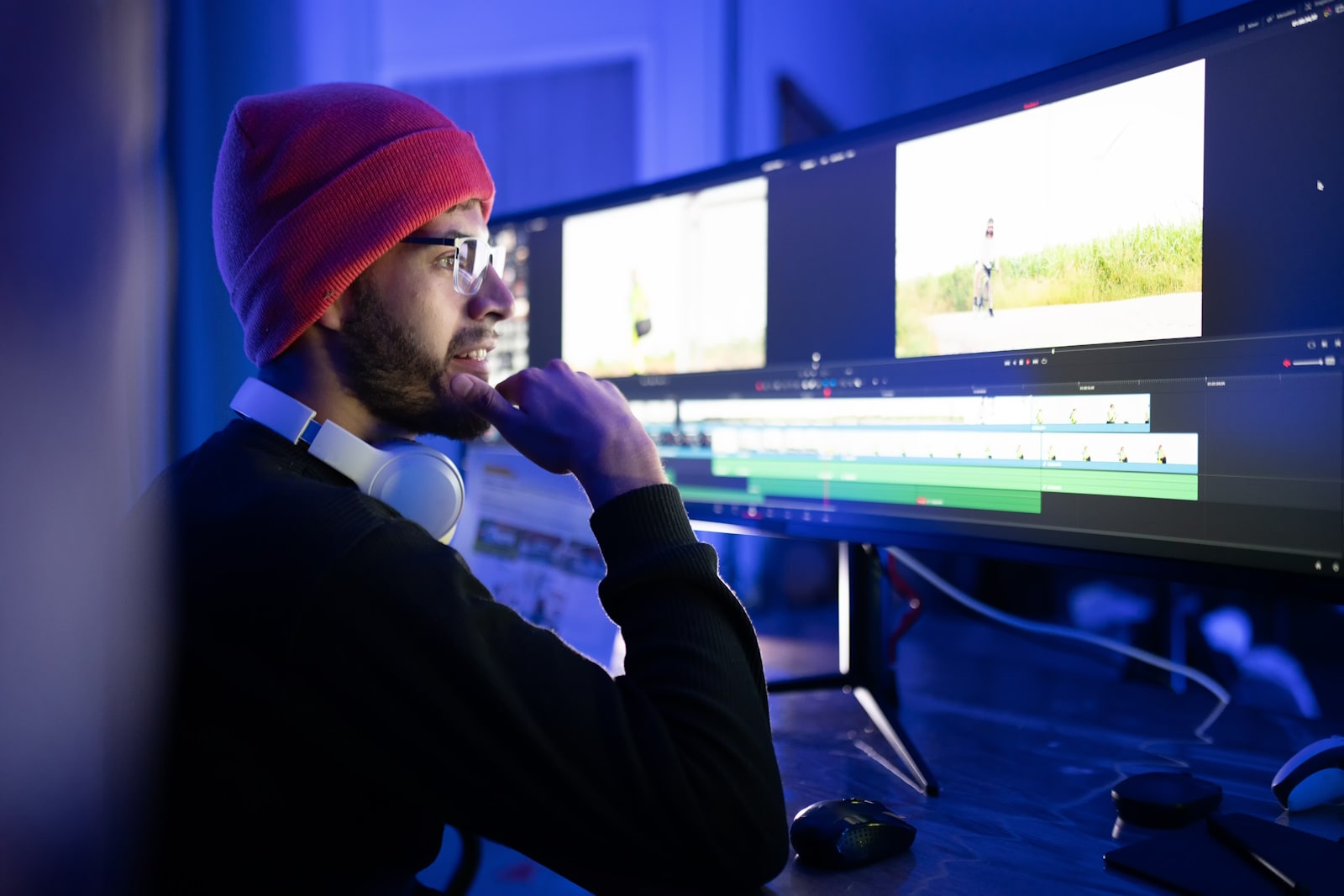
Video Production Firms: Match Cuts and Seamless Transitions
In the ever-evolving landscape of digital advertising, capturing audience attention in the first few seconds is more critical than ever. With short-form content dominating platforms and user attention spans shrinking, the way a story is told visually has become just as important as the message itself. That’s why video production firms are embracing advanced editing techniques like match cuts and seamless transitions to produce content that is not only polished but also emotionally resonant and visually dynamic.
These stylistic devices are more than aesthetic flourishes; they are tools to reinforce narrative flow, establish brand consistency, and guide viewers through compelling visual experiences. Let’s explore how these techniques work, why they matter in the commercial world, and how they help brands stand out in saturated media environments.
What Is a Match Cut?
A match cut is a sophisticated transition that connects two scenes through a visual, conceptual, or audio similarity. Unlike jump cuts, which are meant to jar or surprise, match cuts ease the viewer into the next moment by establishing a subtle yet effective link between two disparate shots. The goal is to create a sense of continuity or contrast that is intuitive to the eye and mind.
This technique is rooted in classical film editing but has found new relevance in brand storytelling. It’s particularly useful in commercials where space is limited and visual shorthand must carry the weight of deeper ideas. For video production firms, mastering this form of editing provides a creative way to bridge concepts and compress time while maintaining viewer engagement.
Types of Match Cuts
1. Action Match
Action match cuts rely on synchronising similar movements between scenes. A person throwing an object in one shot that lands in a completely different scene is a classic use case. These transitions are energetic and dynamic, ideal for sportswear, automotive, or technology brands that want to convey fluidity, speed, and momentum.
2. Graphic Match
This involves aligning visual elements such as shapes, colours, or patterns across shots. Imagine a spinning tyre transitioning into a vinyl record or a rising sun morphing into a lightbulb. These graphic parallels subtly link ideas and objects, suggesting metaphor or evolution—often ideal for corporate storytelling or brand legacy campaigns.
3. Sound Match
Sound-based match cuts link scenes using consistent or analogous audio cues. A door slam that turns into a thunderclap or the roar of a lion that becomes the rev of an engine—these techniques use audio as a guiding thread. They offer a smooth transition that can underscore the emotional continuity between shots and are especially useful in brand campaigns that prioritise mood and tone.
Purpose in Commercials
Commercials are typically short, with 15 to 60 seconds to make an impression. Match cuts enable storytellers to communicate complex narratives in minimal time. By using this technique, video production firms can create strong emotional or conceptual links between ideas, streamlining the flow of information without sacrificing impact.
They’re particularly effective in campaigns that need to convey transformation, progress, or contrast—think “before and after” narratives, origin stories, or brand evolution pieces. In short, match cuts don’t just connect visuals; they help tell a more cohesive and compelling story.
Seamless Transitions vs. Hard Cuts
Hard cuts, while useful, can sometimes be jarring and disrupt narrative momentum. Seamless transitions like whip pans, cross dissolves, morph cuts, masking, and motion-tracked camera movements preserve rhythm and flow. These techniques help make editing invisible to the viewer, which keeps them immersed in the message.
For branded content, this smoothness is key. Disruptive editing can distract from the message or reduce the emotional resonance. Seamless transitions help maintain consistency in tone and style—qualities that contribute to stronger brand identity and viewer trust.
Popular Techniques in Commercial Edits
In high-end commercial work, transitions often function as design elements in their own right. Popular techniques include:
- Speed Ramps: Changing the speed of footage mid-shot to highlight key actions or reactions.
- Zoom Transitions: Used to simulate movement between scenes, often paired with motion blur for realism.
- Light Wipes: A flash or burst of light covers the frame to signal a new scene.
- Camera Motion: Matched movements between shots that maintain consistent directionality and energy.
When used thoughtfully, these transitions enhance storytelling without feeling gimmicky. For video production firms, these tools help elevate brand videos from functional to cinematic.
When (and When Not) to Use Match Cuts
Match cuts should always serve the story. When used with intention, they create meaning, reveal character, or highlight transformation. But when overused or placed without narrative logic, they can feel indulgent or confusing.
For example, in a campaign focused on social impact, a subtle graphic match from a seedling to a growing cityscape might underline a sustainability theme. But inserting the same technique into every transition could dilute its effect and draw attention away from the story.
Balance is key—video production firms must consider pacing, tone, and the emotional arc of the content to use these tools effectively.
Brand Identity Through Editing Style
The editing style a brand chooses becomes part of its visual language. Consistent use of match cuts and seamless transitions can define how a brand feels—slick, modern, reflective, or bold. Over time, this style becomes recognisable, enhancing brand equity.
Video production firms play a vital role in establishing this rhythm and tone. A well-cut video is not just technically competent—it feels like it belongs to the brand. That’s where editing becomes art.
Real Commercial Examples
Some of the world’s most memorable commercials have used match cuts and transitions to stunning effect. Think of ads where an athlete morphs into another mid-jump, or where a child’s drawing becomes a real product. These sequences demonstrate the power of editing to bend time, space, and logic—all while keeping the audience hooked.
Campaigns with split-screen action, mirrored motion, or rhythmic edits have become benchmarks for what’s possible when storytelling meets technique. Studying these examples provides inspiration for how video production firms can push creative boundaries.
Conclusion
Match cuts and seamless transitions are more than stylistic choices—they are storytelling tools with the power to connect, inspire, and elevate. In the hands of skilled editors, these techniques shape the pacing, emotion, and identity of a brand’s message.
For video production firms, investing in the mastery of these techniques means delivering not just content, but cinematic experiences that resonate with audiences and leave lasting impressions.
Looking to create polished, high-impact videos that tell your brand’s story with flair? At Sound Idea Digital, we specialise in visual storytelling through expert editing, match cuts, and seamless transitions. Let’s bring your vision to life—contact us today.



